Abstract
The antipseudomonal activities of cefotaxime, ceftizoxime, ceftazidime, ceftriaxone, cefoperazone, and moxalactam were tested in conventional minimum inhibitory concentration titrations and according to morphological and turbidimetric criteria. Three groups of pseudomonal strains were tested: carbenicillin hypersusceptible, carbenicillin susceptible, and carbenicillin resistant. In minimum inhibitory concentration titrations, the carbenicillin-hypersusceptible strains did not differ greatly in their susceptibility to other beta-lactam agents, although moxalactam appeared to be rather less active than the other drugs. When tested against the remaining strains, ceftazidime was the most active compound, followed by cefoperazone and ceftriaxone. The turbidimetric experiments supported by microscopical observations, all of the agents induced bacterial lysis in the carbenicillin-hypersusceptible strains, but cefoperazone appeared to be less actively bacteriolytic than the rest of the antibiotics. None of the agents was able to prevent growth of the remainder of the Pseudomonas aeruginosa strains in the first few hours of drug exposure, during which time the bacteria elongated to form long filaments. However, the various agents differed in the length of time which elapsed before growth was completely halted. Judged in this way, moxalactam was the most active compound in relation to its minimum inhibitory concentration, but in comparative experiments in which the same concentration of each drug (64 microgram/ml) was used regardless of the minimum inhibitory concentration, ceftazidime appeared to be the most active antibiotic, followed by ceftriaxone and cefotaxime.
Full text
PDF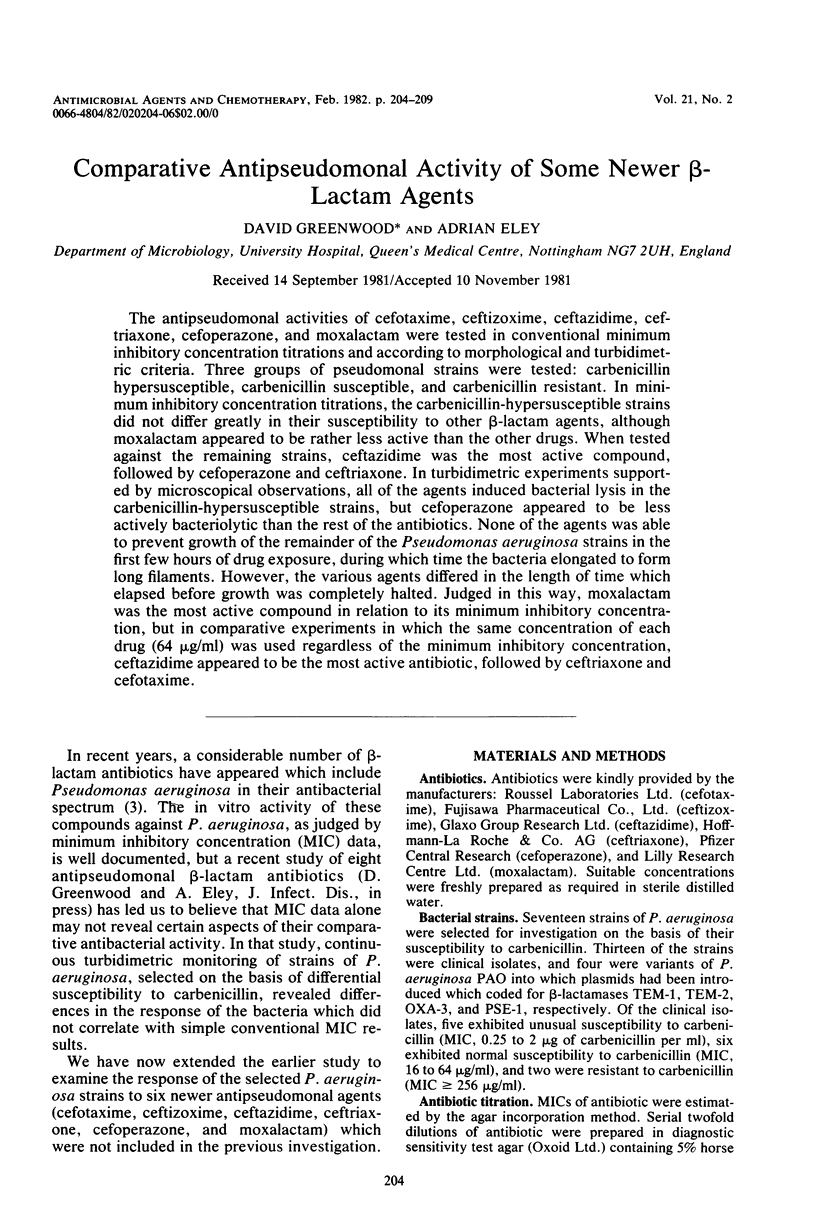
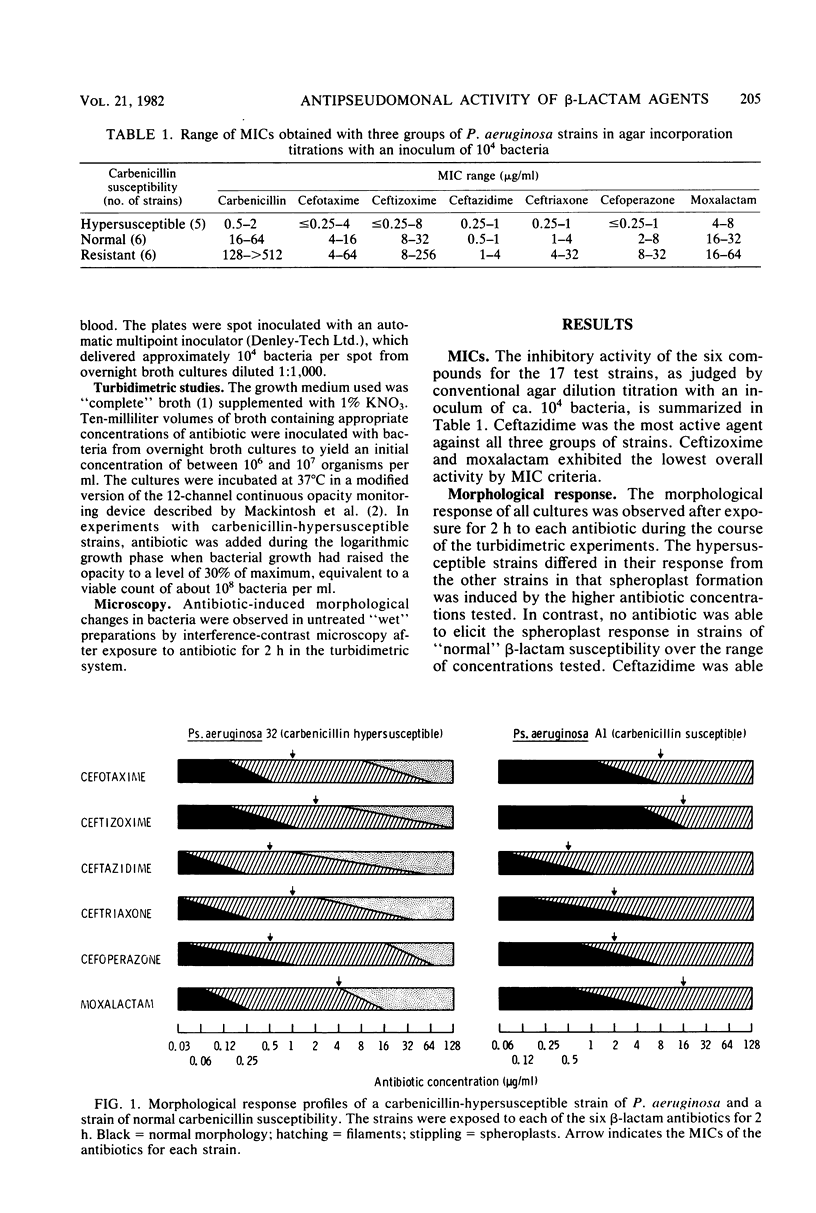
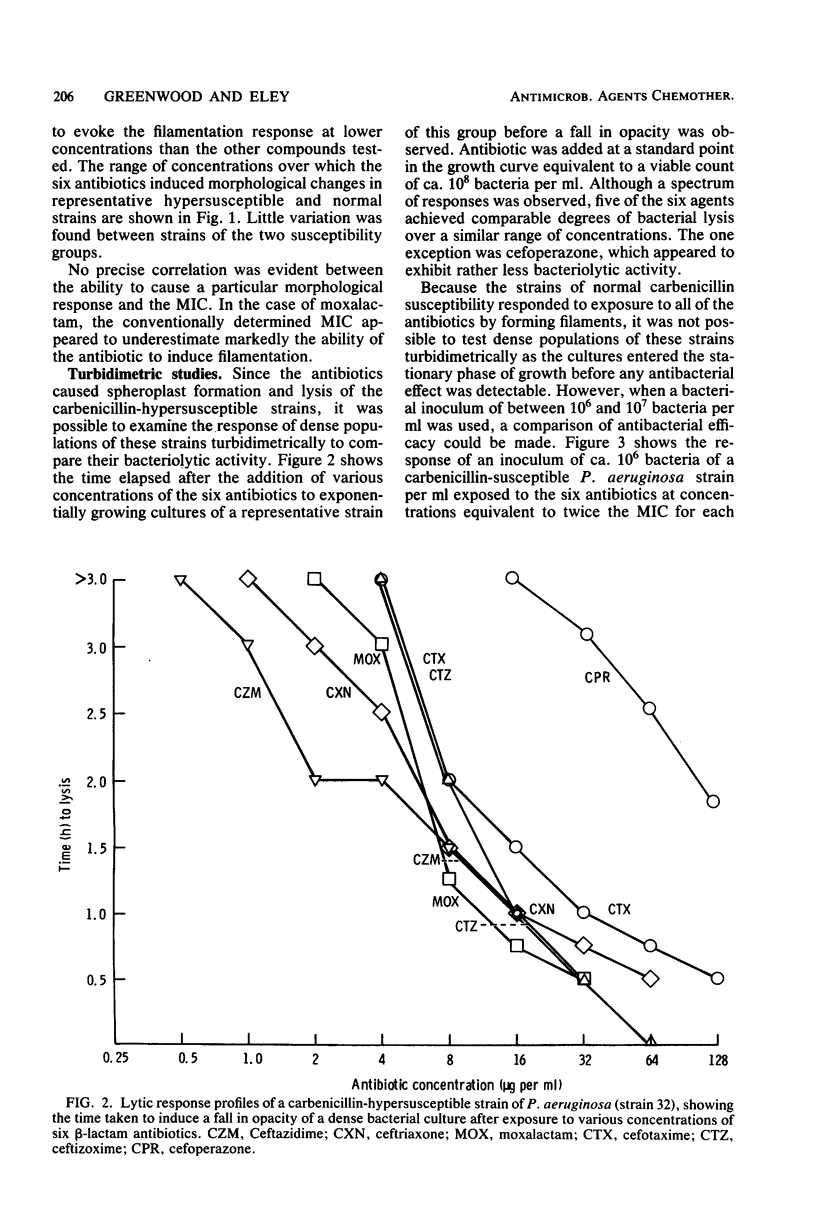
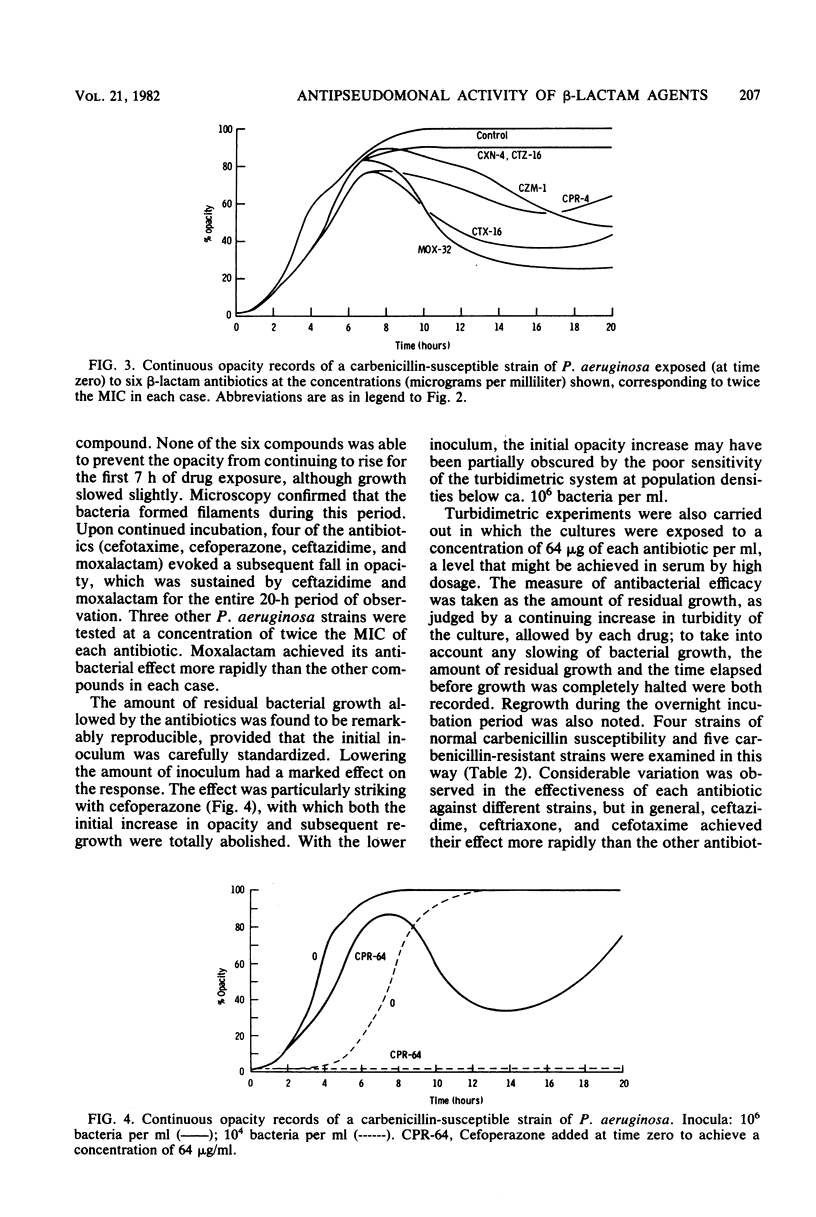
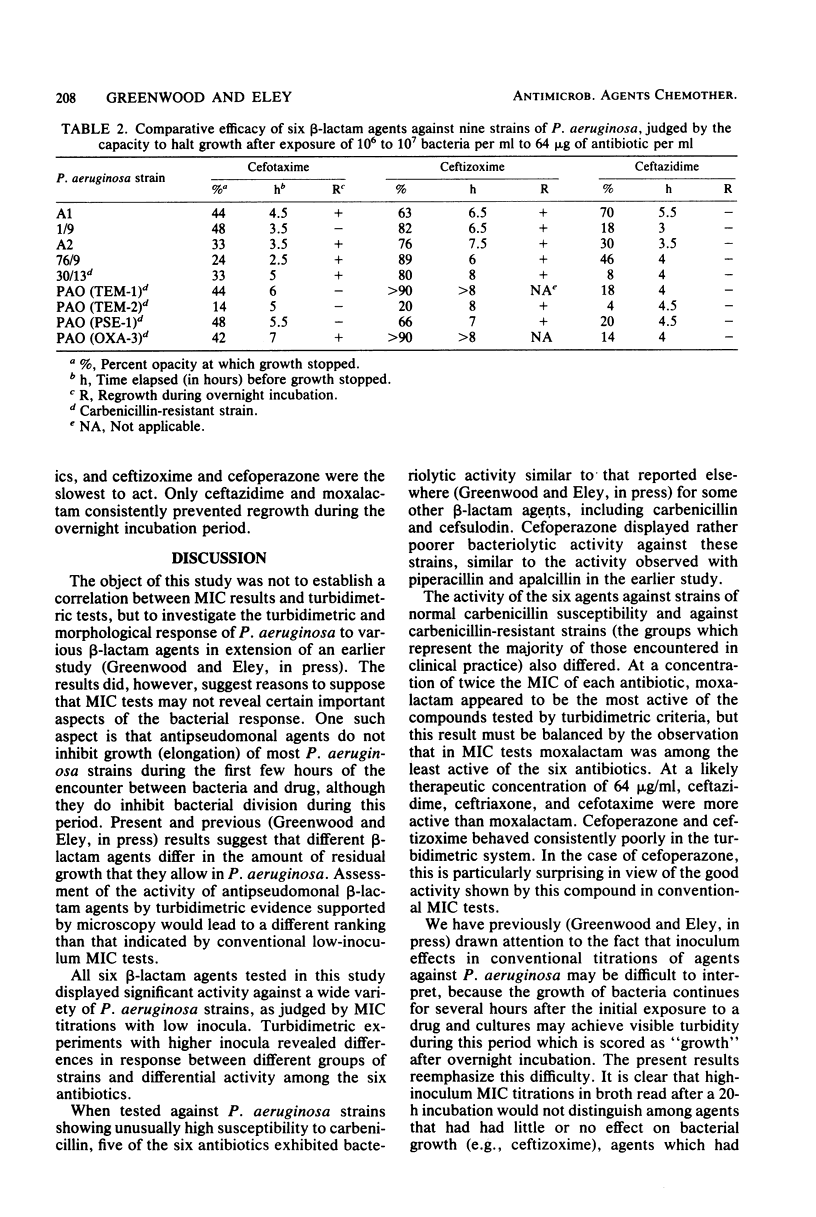
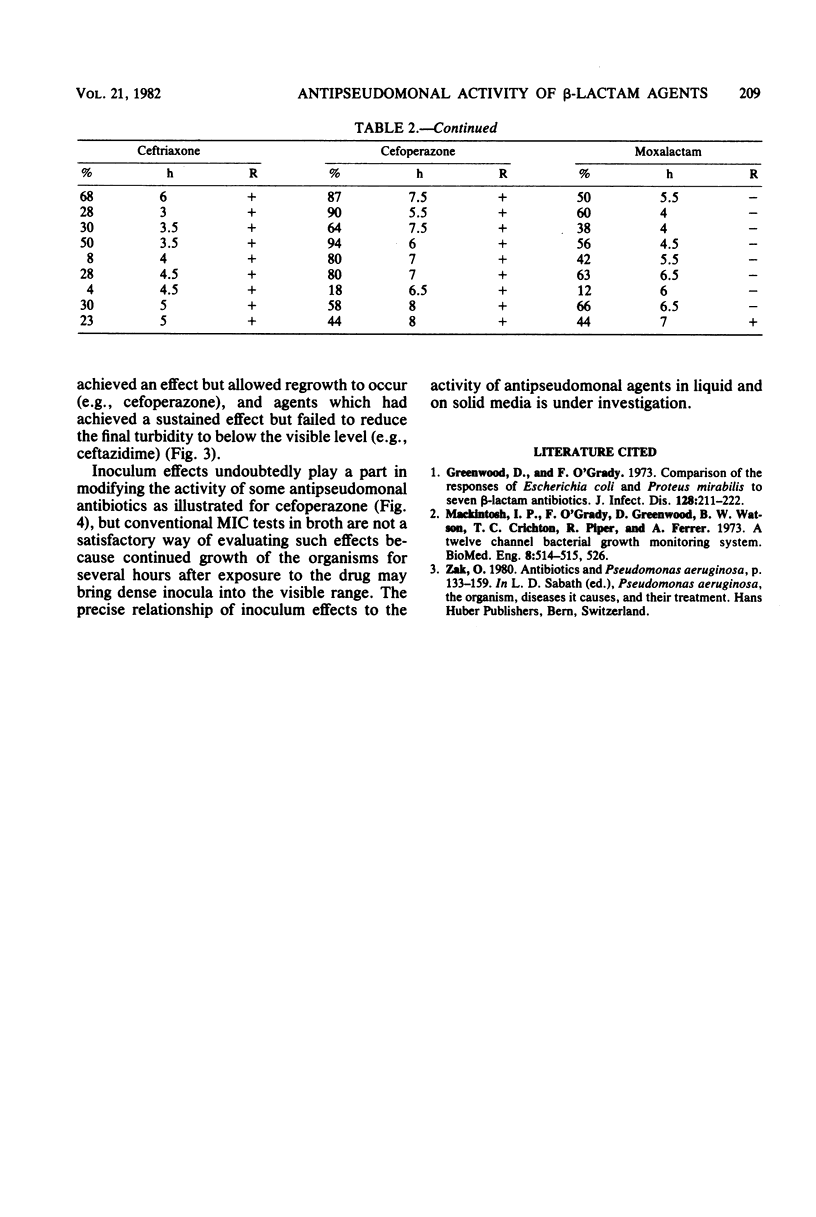
Selected References
These references are in PubMed. This may not be the complete list of references from this article.
- Greenwood D., O'Grady F. Comparison of the responses of Escherichia coli and proteus mirabilis to seven beta-lactam antibodies. J Infect Dis. 1973 Aug;128(2):211–222. doi: 10.1093/infdis/128.2.211. [DOI] [PubMed] [Google Scholar]
- Mackintosh I. P., O'Grady F., Greenwood D., Watson B. W., Crichton T. C., Piper R., Ferrer A. A twelve channel bacterial growth monitoring system. Biomed Eng. 1973 Dec;8(12):514–passim. [PubMed] [Google Scholar]


